Wednesday, 2:00pm
29 May 2024
Mini, Midi, Maxi …
The Biba Story, 1964-1975
Fashion and Textile Museum, 83 Bermondsey Street, London SE1 3XF. From 22 March 2024 – 8 September 2024, open Tue-Sat 11.00–18.00A new exhibition charts the rise and fall of the influential fashion brand Biba. Janet South reports
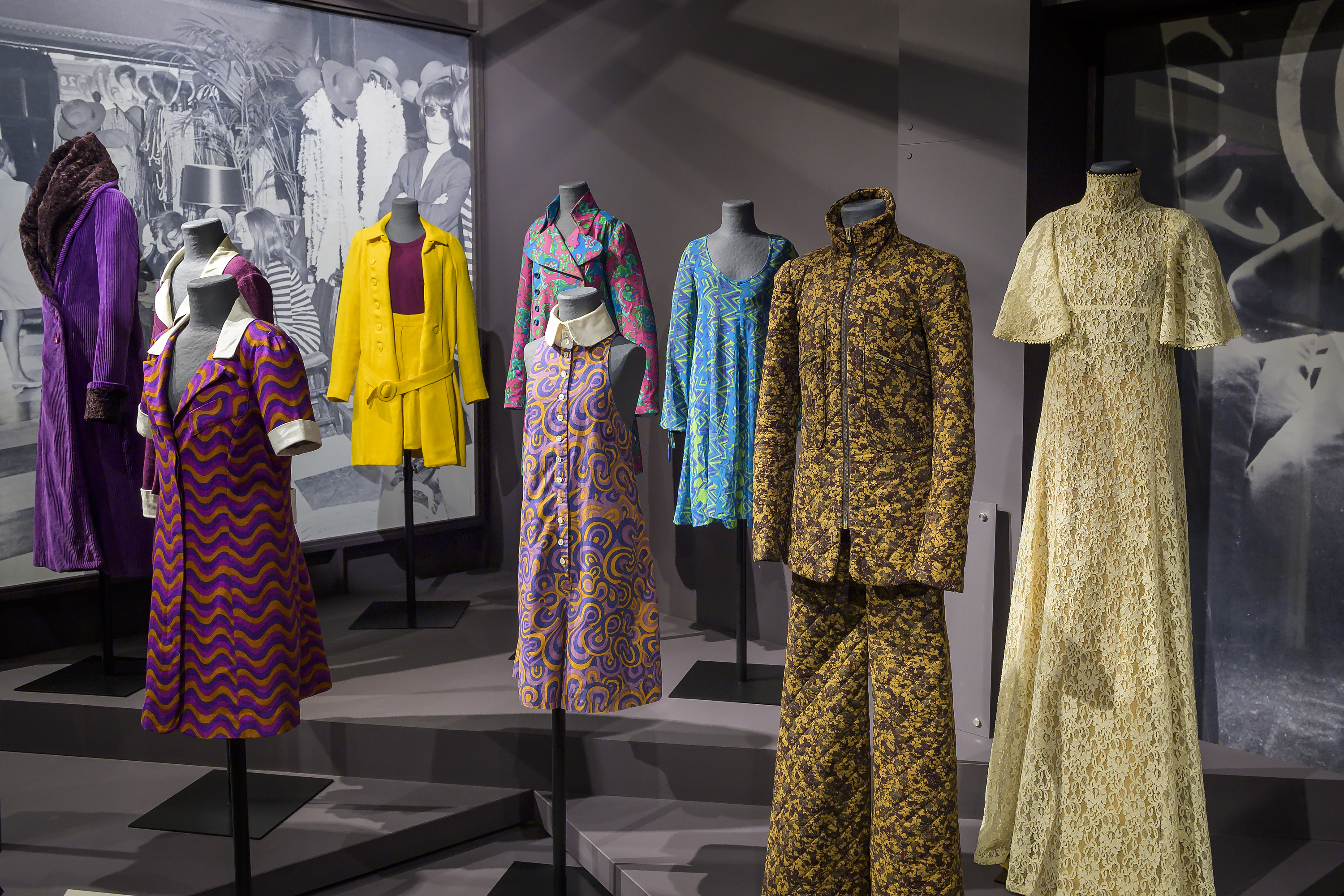
‘The Biba Story, 1964-1975’, now on at London’s Fashion and Textile Museum until 8 September 2024, chronicles the meteoric rise and fall of the Biba fashion brand, writes Janet South. The exhibition shows Biba’s evolution from mail-order catalogue via its popular boutiques to the gloriously short-lived ‘Big Biba’ in a seven-storey department store (former Derry & Toms) in Kensington
In the early 1960s, Biba’s founder Barbara Hulanicki identified a youth market hungry for cheap, up-to-the-minute clothes. Biba started as a small mail order company, and its first dress – a gingham shift inspired by Brigitte Bardot – became a best-seller: a replica of this opens the exhibition.
Big
Biba display at ‘The Biba Story, 1964-1975’, 2024.
Top. Church
Street Exhibition display. Both photos courtesy Fashion and Textile Museum.
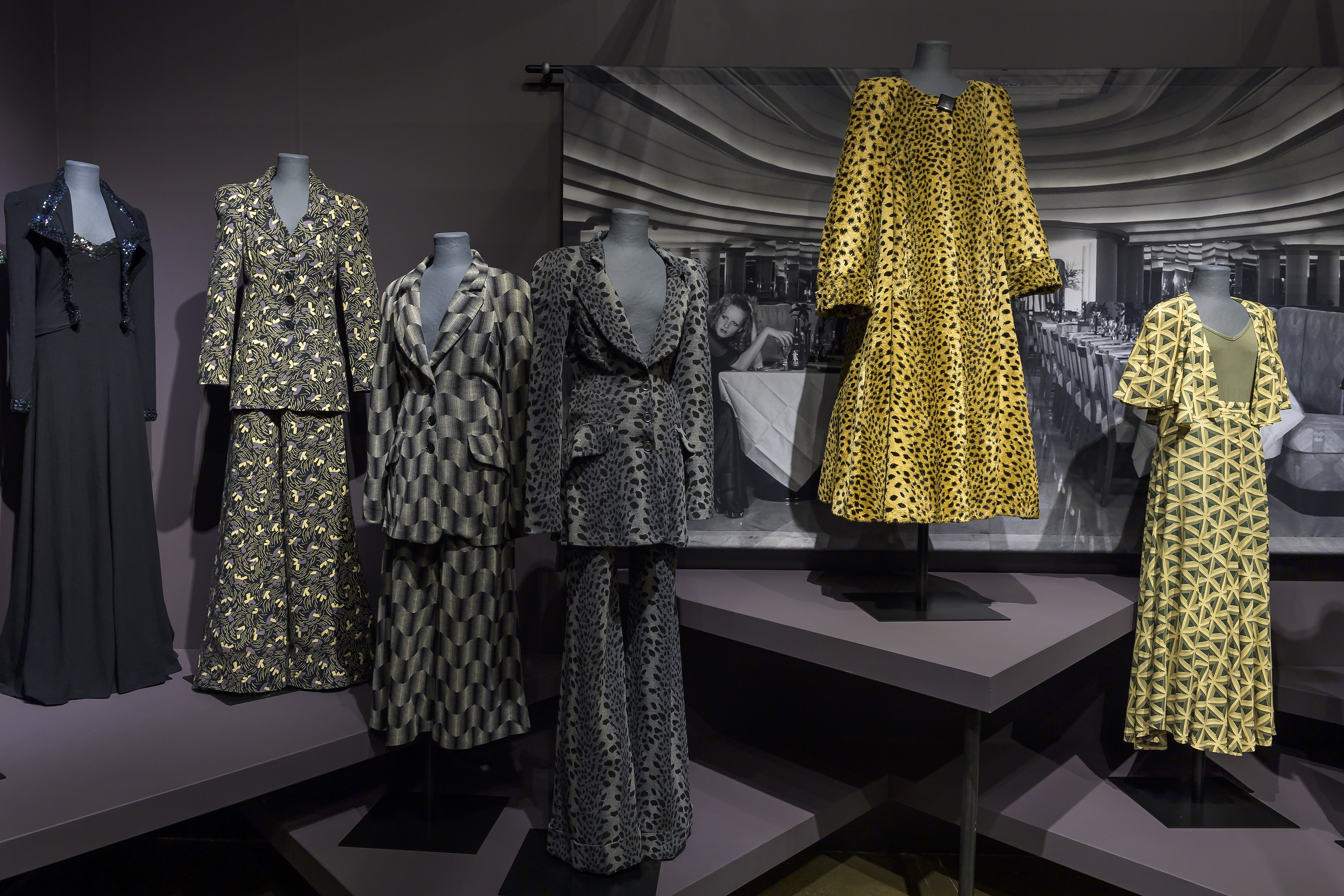
The museum’s downstairs gallery features 40 outfits spanning the transition from the mini-skirted ‘Biba Girl’ to the Hollywood glamour of ‘Biba Woman’ – wearing sequins, feathers and maxi dresses. It displays Biba’s distinctive looks with a colour palette ranging from 1960s psychedelic pop art to the rich aubergine, plum, black, rust and mustard of the 1970s. And from simple fabrics to luxe velvets, chiffons and faux furs.
Biba Pink Gingham Dress, 1963, courtesy Fashion and Textile Museum.
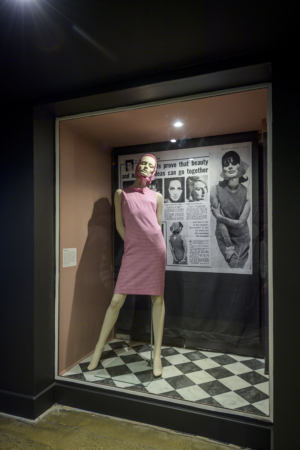
During this period Biba evolved from a small London corner shop in Abingdon Road, to a boutique in Church Street, then Kensington High Street and finally Big Biba. Although her clientele included celebrities such as Mick Jagger, Twiggy and The Beatles, Hulanicki kept prices low to ensure the Biba world was inclusive and available to all.
Biba make-up products, ca. early 1970s, courtesy Fashion and Textile Museum.
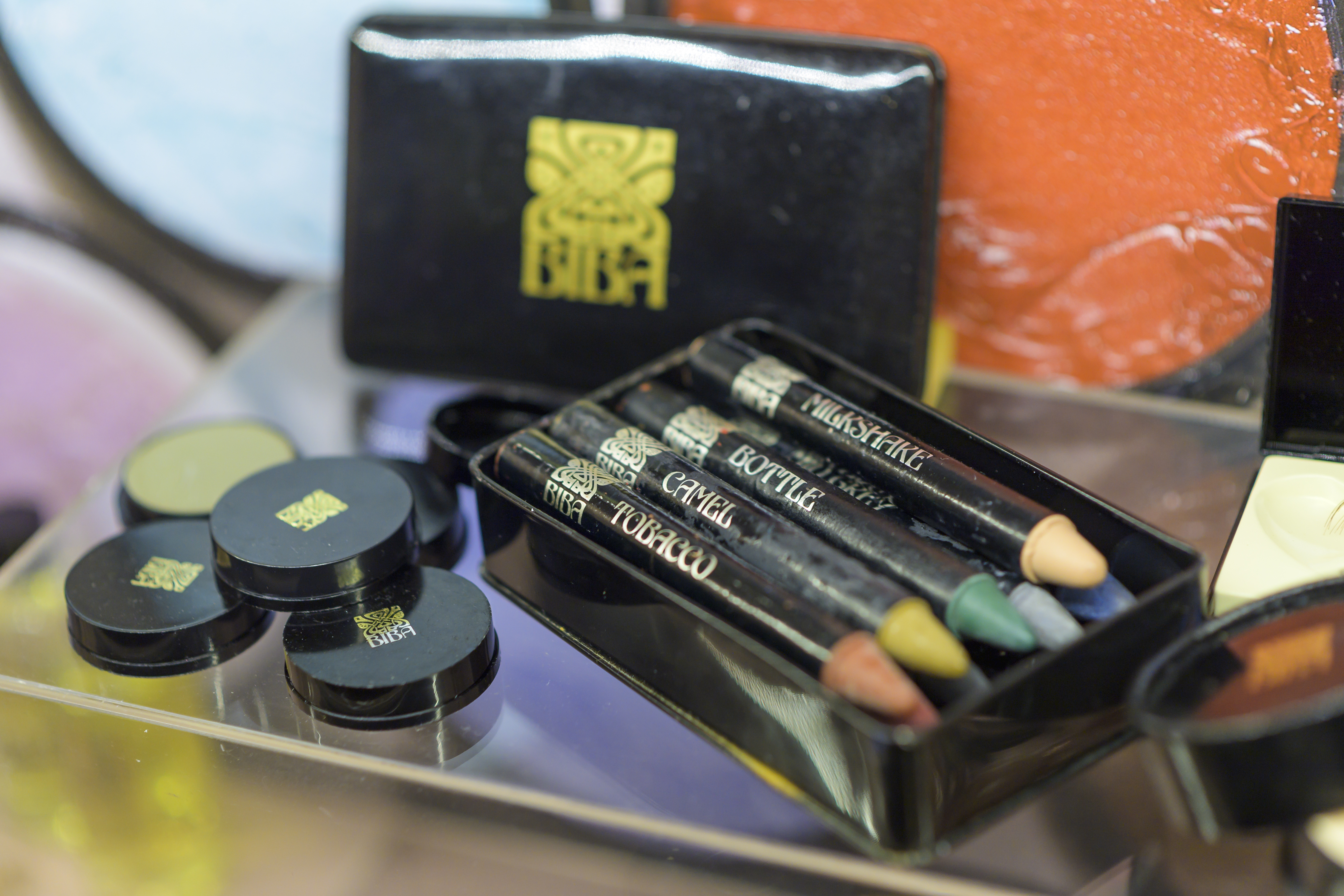
In the upstairs gallery you can see how Biba expanded into what we now call a ‘lifestyle brand’. With the 1973 opening of Big Biba at the old Derry & Toms building on Kensington High Street, Hulanicki packaged every product with the distinctive black-and-gold Biba logo. This was applied to everything in the store – from baked beans to cosmetics and paint. There was a roof garden with live flamingos and the Rainbow Room, a 500-seat restaurant and theatre.
Repurposed Biba Baked Beans tin from the collection of Janet South.
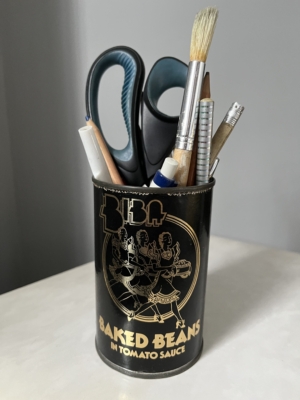
Biba toiletries, ca. early 1970s. Photo: Janet South.
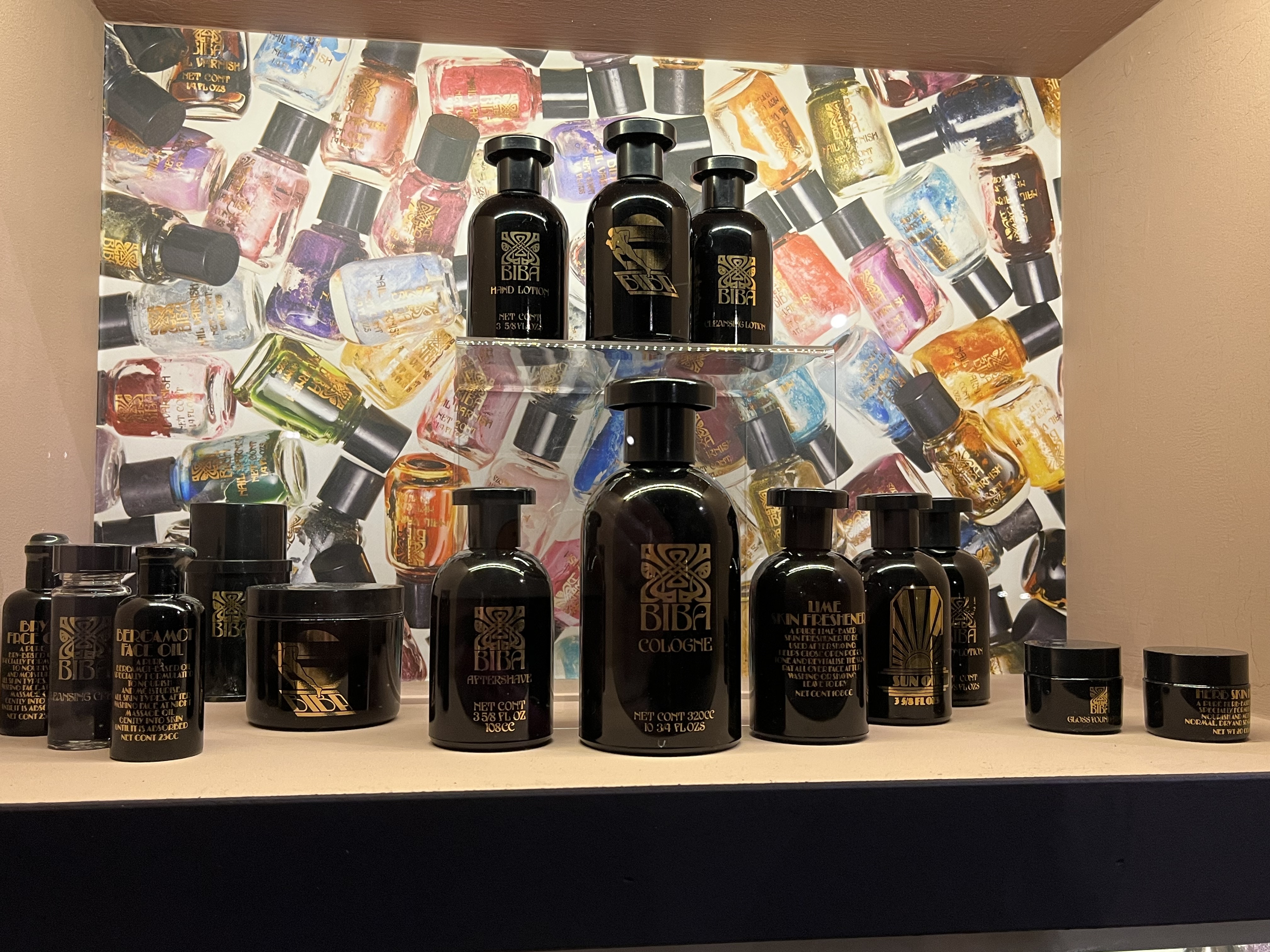
The Biba catalogues were another of Hulanicki’s innovations and upstairs has all six (now very rare) copies on display. Designed by John McConnell (who also designed the original Biba logo) and with photography by Harri Peccinotti, Helmut Newton and Sara Moon, the mail order catalogues were distinctly styled with editorial content to look more like a fashion magazine and cleverly designed with a narrow shape to ensure they fitted the average British letterbox.
Spread from Biba mail order catalogue, late 1960s, printed in a single colour to save money, and using big pictures to conceal the young company’s then limited range of products. See Eye 81.
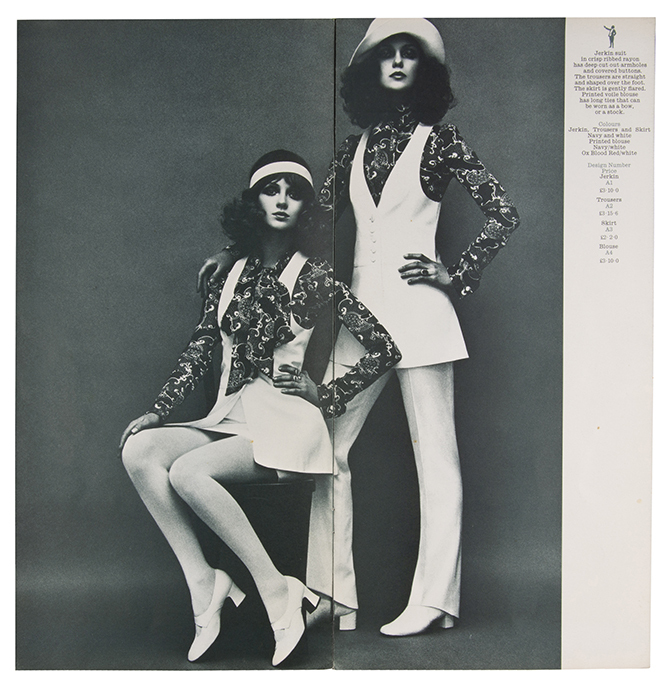
Uncompromising but ultimately unprofitable, Big Biba would last only two years. After financial difficulties, Hulanicki lost the Biba name in 1975 when it was sold to a large corporate business. Various companies have tried to re-launch the label as a stand-alone shop and Biba currently exists as a department within House of Fraser. Yet in its time, Biba had a tremendous impact on the retail world, with innovations in branding, marketing and fashion, and managed to stay grounded and affordable while simultaneously being aspirational and a fashion cult.
‘The Biba Story, 1964-1975’ at the Fashion and Textile Museum. Photo by Janet South.
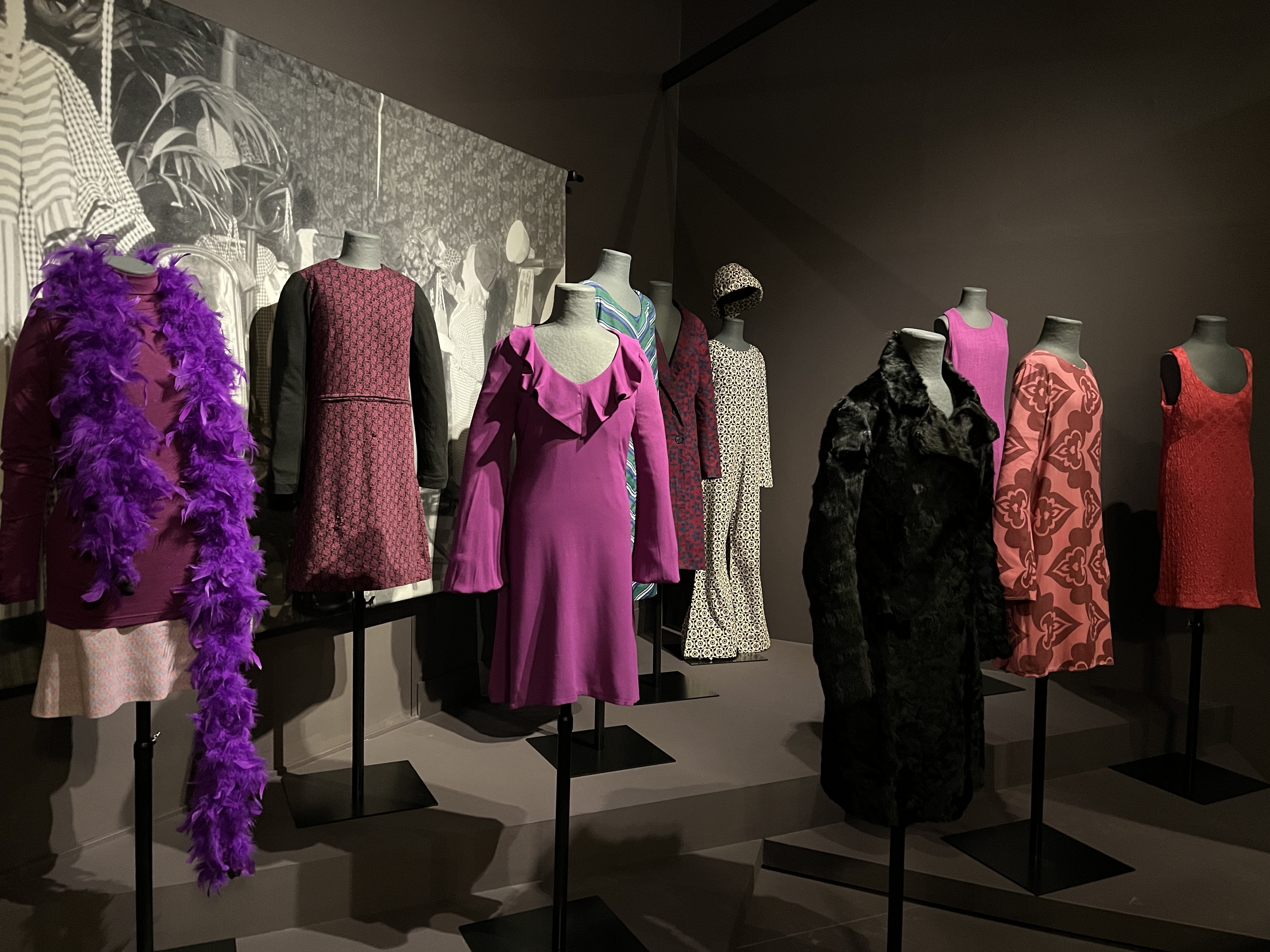
I remember visiting Big Biba with my parents in the early 1970s. An elderly lady, stepping into the atmospheric gloom of the ground floor, tripped and fell down in front of us. As we helped her to a chair to recover, she explained that she was confused because she had just popped in to buy some gloves and couldn’t understand what had happened to Derry & Toms. This incident was strangely symbolic of the ‘Biba Effect’, revolutionising high-street shopping habits and leaving the establishment in dizzying disorientation. Poor lady – I’m sure there were some nice black satin and leopard print gloves on the first floor if only she could find her way to the lift.
Gold-printed Biba logo on catalogue cover. See Reputations: John McConnell, an Eye 81 interview with the art director behind Biba’s original wordmark, which was made from one of the photo-lettering alphabets available at Face, where McConnell was a director in the 1960s.
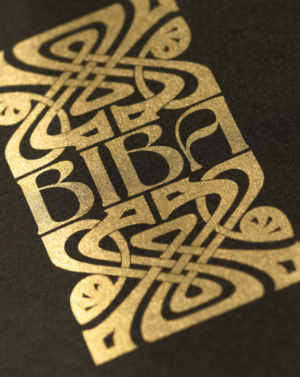
Fashion and Textile Museum, 83 Bermondsey Street, London SE1 3XF
22 March 2024 – 8 September 2024, open Tue-Sat 11.00–18.00 (last entry 17.15)
Tickets £11.50, £10.50. £9.50 (with concessions)
Eye is the world’s most beautiful and collectable graphic design journal, published for professional designers, students and anyone interested in critical, informed writing about graphic design and visual culture. It is available from all good design bookshops and online at the Eye shop, where you can buy subscriptions and single issues.
